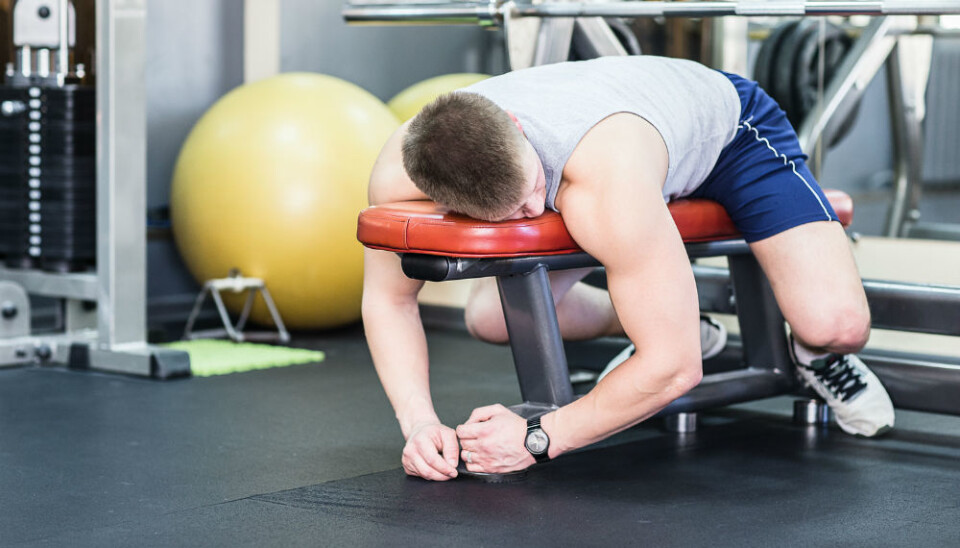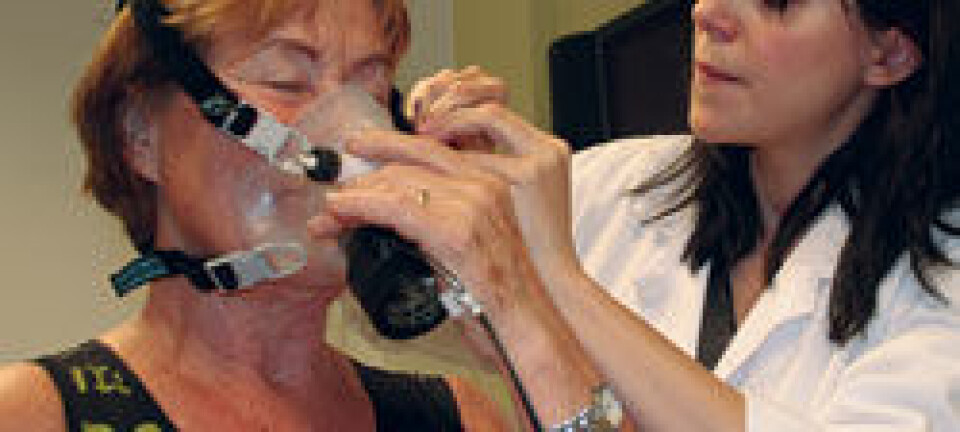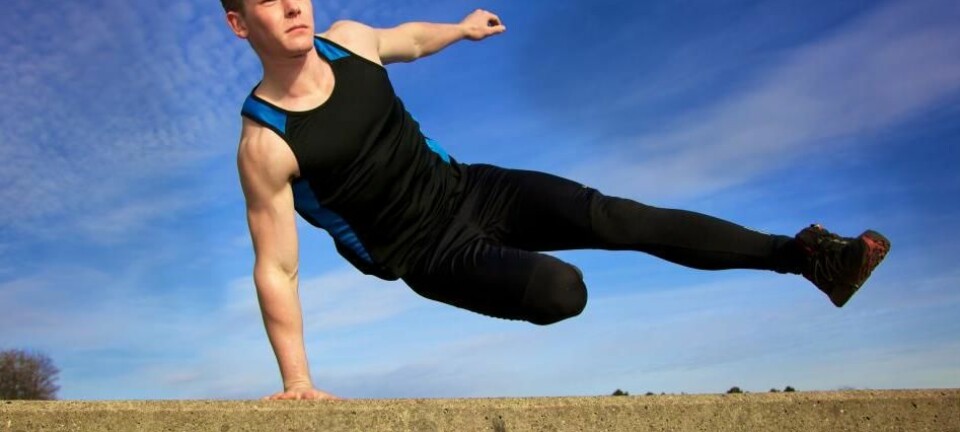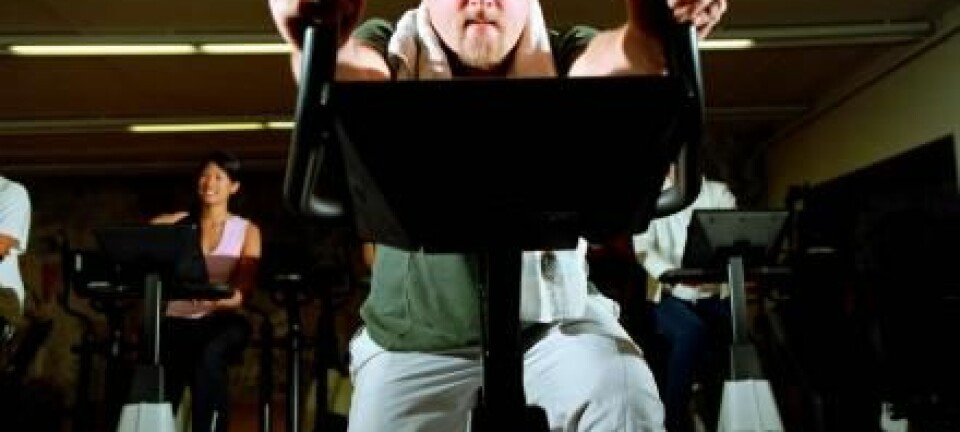
Should you exercise if your muscles are sore?
Is it OK to work out — or will you just make things worse?
We've all been there. After a couple of weeks of holiday, you come back and have a pretty hard training session. You figure you were in pretty good shape before you left, so you add some extra weights to your barbell and do your squats as usual.
The next day is another matter, however.
Your thighs are so stiff you have to hang on to the banister to totter downstairs. Just the thought of putting on pants to go to work nearly makes you cry. And then there’s the question of the next training session.
Should you wait until you're not sore anymore, or continue to train as usual?
Not sure what causes sore muscles
Kristoffer Toldnes Cumming from the Norwegian School of Sport Sciences, and Jan Helgerud from NTNU say that researchers don’t really know what happens with your muscles when you get sore.

“There have been many hypotheses across the ages,” says Cumming, who is a postdoctoral researcher specializing in training and recovery. “It used to be that we blamed lactic acid.”
Lactic acid is a substance that is produced when muscles need a lot of energy over a short period but do not have access to enough oxygen — a situation that often occurs during endurance training. But lactic acid is no longer believed to be the reason for why you are sore the day after exercising.
“Lactic acid is gone after an hour,” says Jan Helgerud, a professor at NTNU who studies both endurance and strength training.
He points out that you may have a sky high level of lactic acid during endurance training without being sore the day after.
Small tears and inflammation

Helgerud says the most likely cause of soreness is small tears or injuries to the muscles that occur when you make an unaccustomed movement with a great deal of effort or strain. The result is an inflammatory reaction that causes painful and sore muscles for a few hours after the session is complete, and can be at its worst 24-48 hours after your workout.
Researchers call this delayed-onset muscle soreness (DOMS).
“Any training involves breaking down your muscles. The body responds by building them up again to withstand greater stresses the next time you train,” explains Helgerud.
But Cumming believes that there are questions around this theory, too.
“For example, scientists have not found a correlation between how sore you feel and how injured your muscles are. The injury occurs during your training and you might not feel stiff at all while you are exercising or immediately afterwards, either,” Cumming said.
- RELATED: Why is it so important to take breaks when you train?
- RELATED: Is it possible to lose weight while building muscle?
Waiting out the stiffness might be smart
Whatever it is that causes your muscles to feel stiff, both scientists are clear that it is nothing to be worried about.
“There is nothing dangerous about feeling sore, other than that it is extremely unpleasant,” says Cumming.
But that doesn’t mean it’s smart to keep training if your muscles are really sore, the researchers said.
“When you're sore, you can’t give your all, so you don’t get as much out of your workout,” Cumming said. “Your technique also might not be that good.”
Both Cumming and Helgerud recommend waiting until the worst soreness is gone before embarking on a new session with the same exercises.
But that is no excuse to lie on the couch for the next five days, they say. Instead, you could do a different kind of exercise, like endurance training if you are sore from lifting weights, or working out your upper body if you have sore feet.
No real treatment for muscle soreness
Not only do we not know exactly what happens in the body to make our muscles stiff— there is no scientifically proven treatment that helps with the pain.
Researchers have studied massage, cold therapy, compression garments, antioxidants, protein supplements and stretching, Cumming says, but nothing has been shown to really work.
The only thing that really helps with muscle soreness is to get in shape and exercise regularly, the researchers say.
“If you only do squats once a week, you will most likely be sore afterwards. If you train twice a week, you’ll feel better. If you do squats three times a week, you may not experience soreness at all,” Cumming says.
Nevertheless, you shouldn’t train so hard that you are unable to train for two to three days after a hard session because of soreness. “That’s just not a good way to train,” Helgerud said. “But being a little stiff isn’t dangerous, and it tells you that you have worked your body hard.”
- RELATED: Did you know that your brain may be the organ strengthened the most by physical exercise?
———
Read the Norwegian version of this article at forskning.no



































